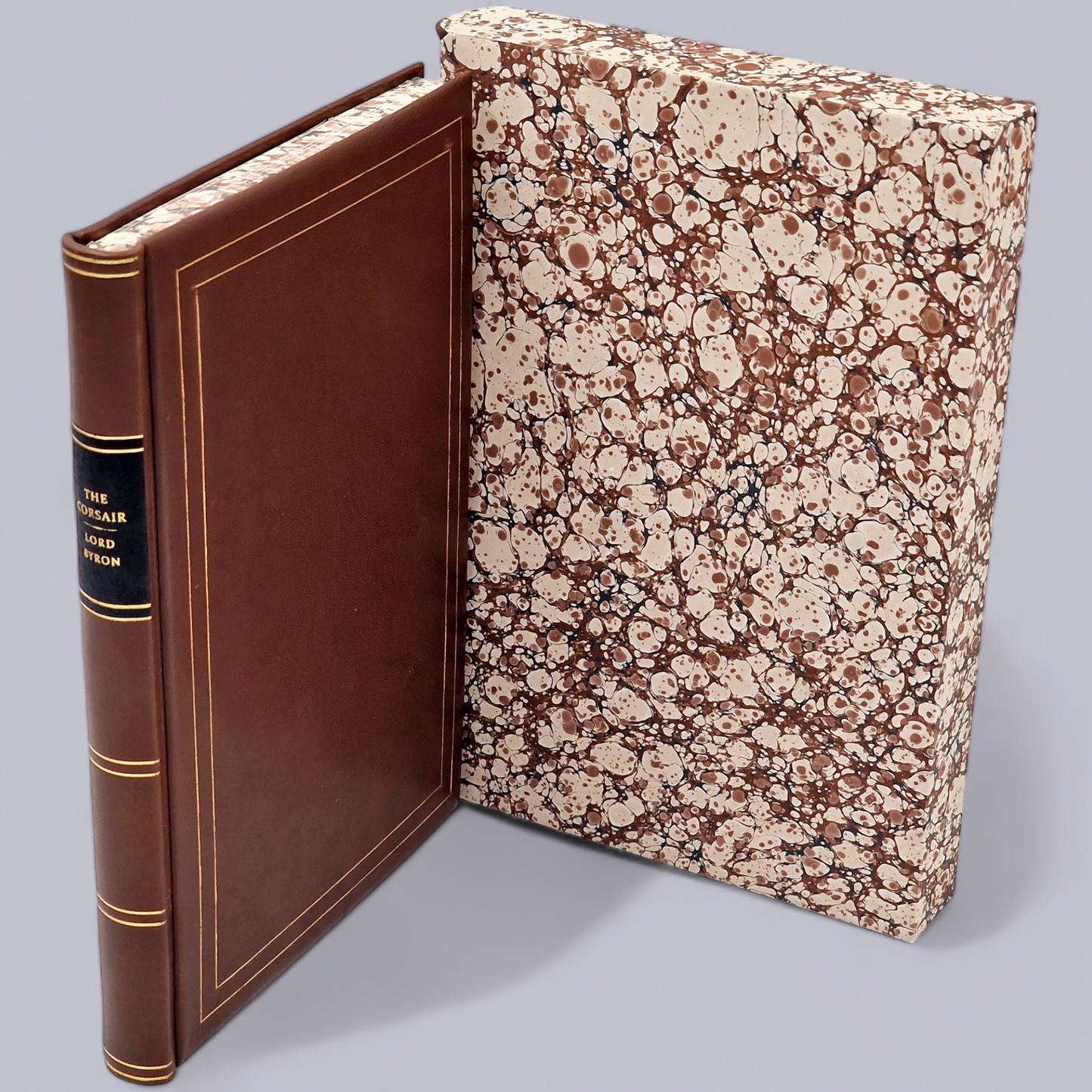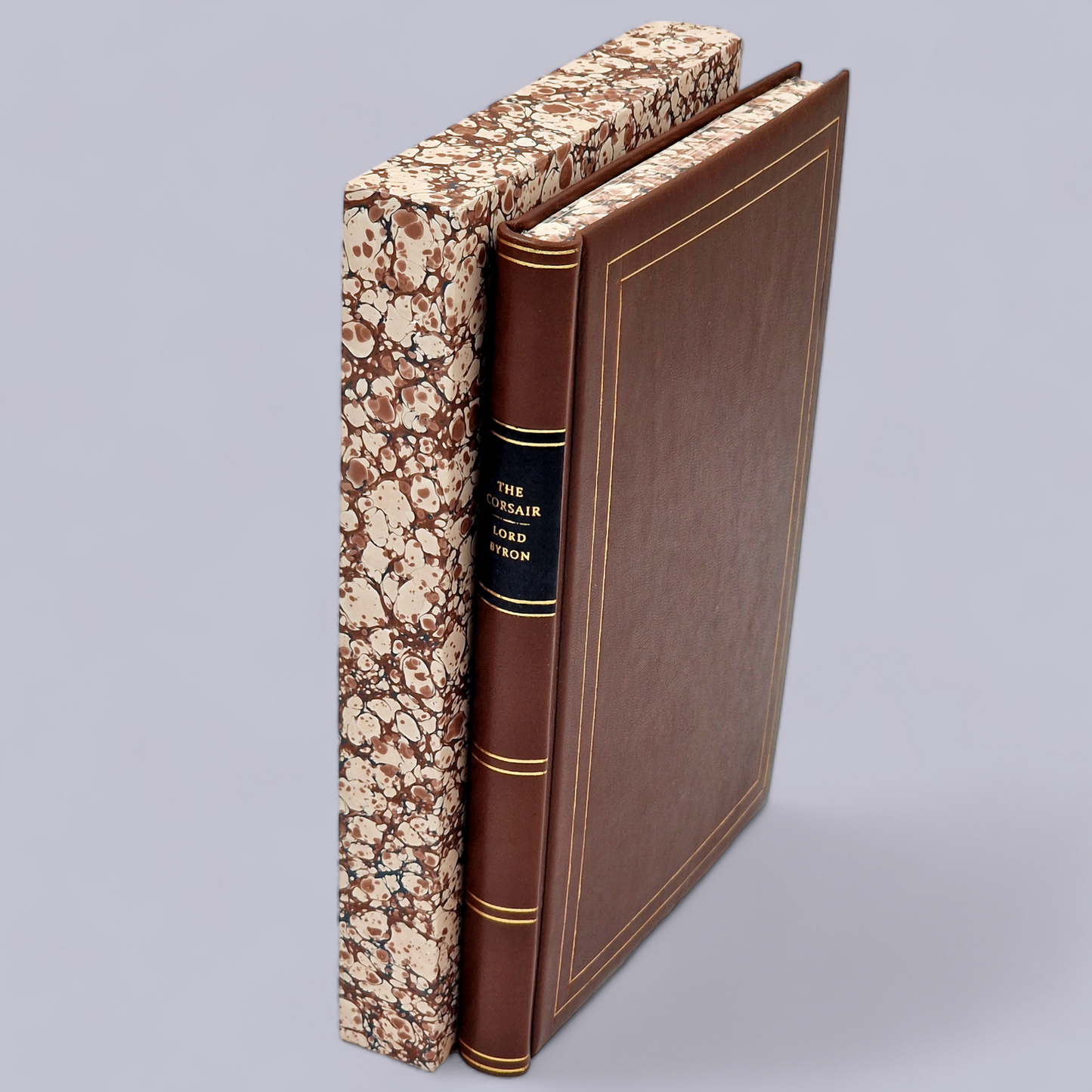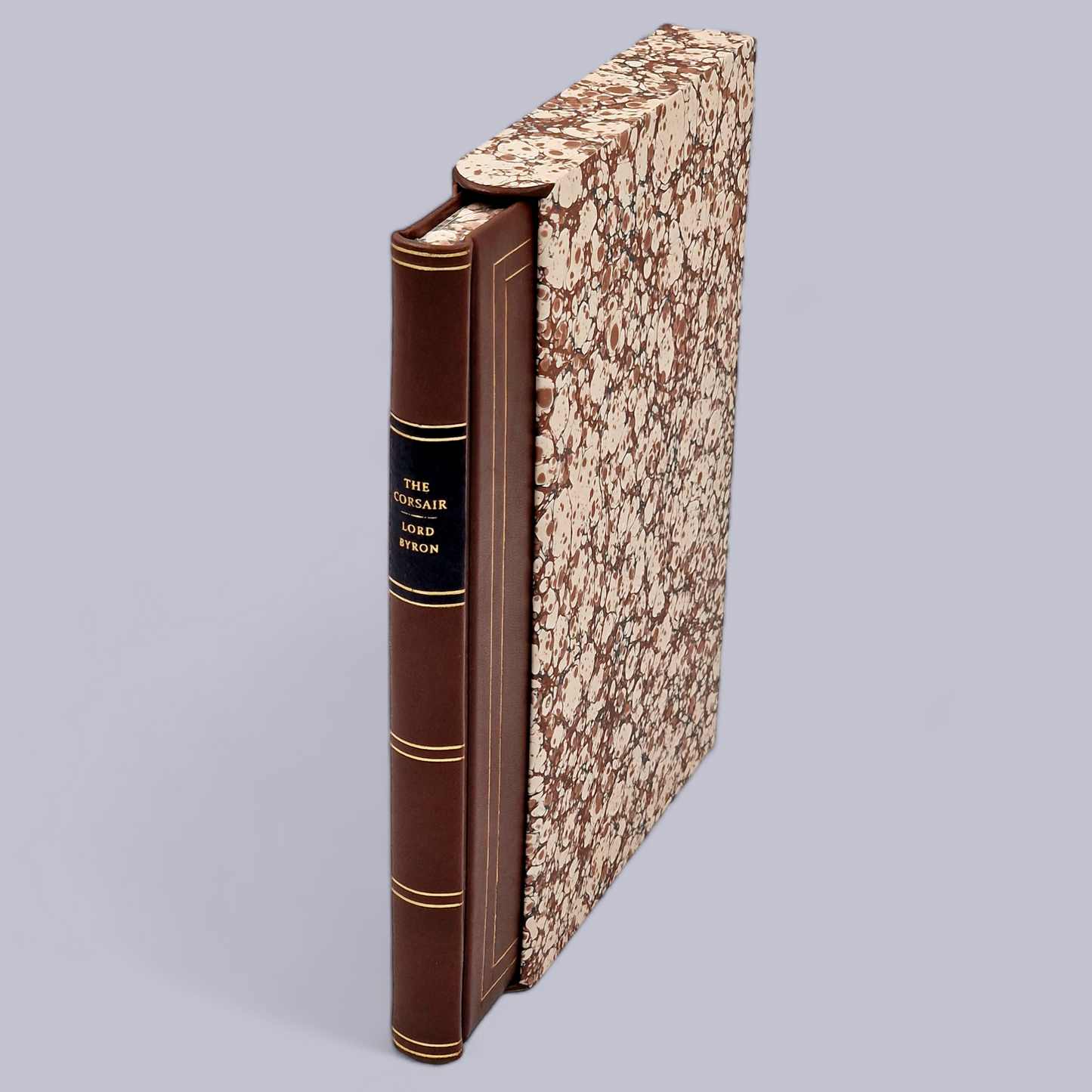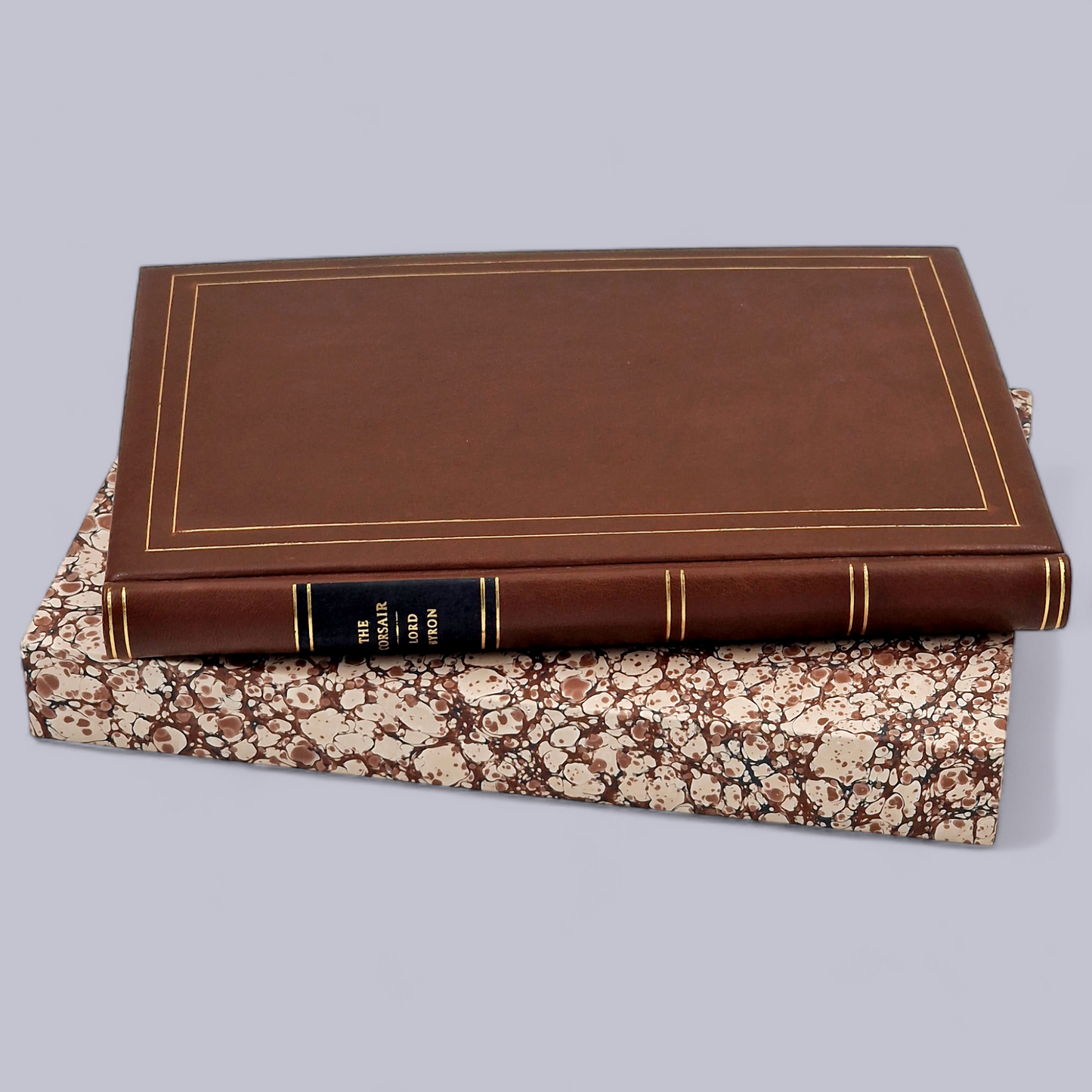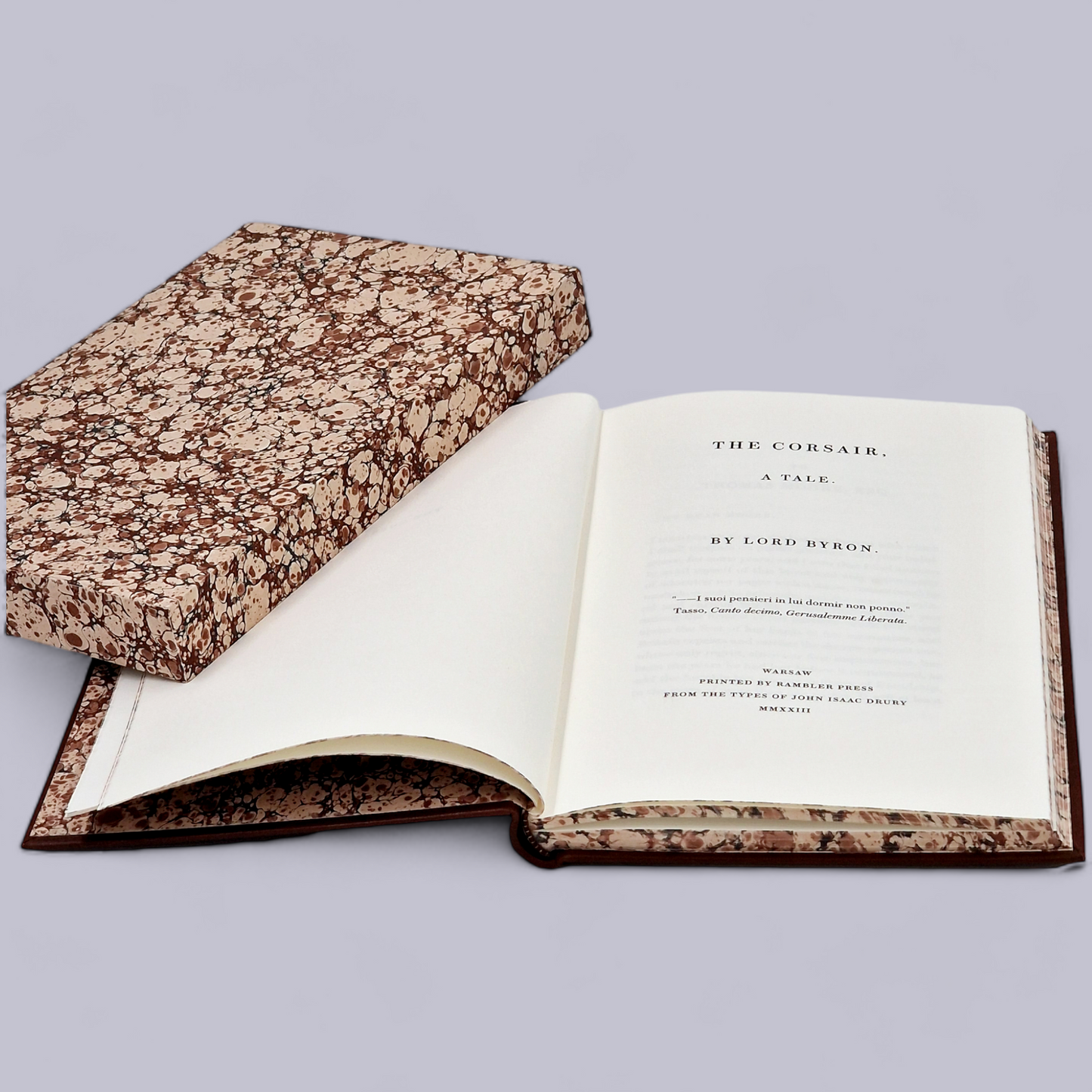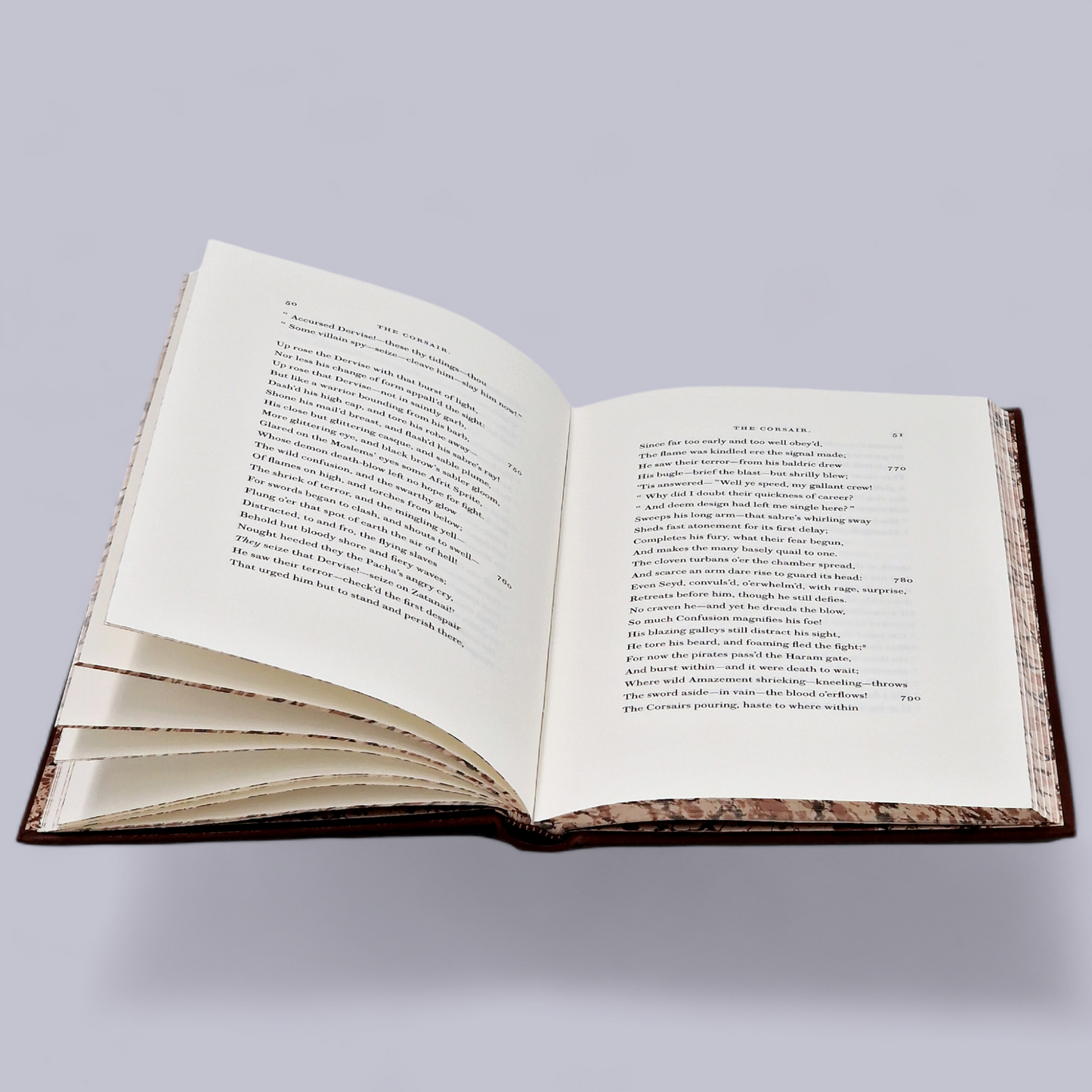SKU:
George Byron
The Corsair. A Tale
The Corsair. A Tale
Couldn't load pickup availability
The Corsair (1814) by Lord Byron is one of the most celebrated narrative poems of the Romantic period. Published in London by John Murray, this long tale in verse achieved unprecedented popularity, selling ten thousand copies on the very first day of release. Dedicated to Irish poet Thomas Moore, Byron’s poem established the enduring image of the Byronic hero: a solitary, enigmatic, morally ambiguous anti-hero whose inner conflicts captivated readers throughout the nineteenth century and beyond.
Divided into three cantos, The Corsair recounts the dramatic life of Conrad, a pirate or privateer whose actions against humanity—save for women—leave him alienated from society. The first canto follows Conrad’s plan to raid Pacha Seyd, despite the pleas of his devoted wife Medora. The second canto depicts the disguised attack, Conrad’s attempt to rescue Seyd’s harem, and his subsequent capture. In the third canto, Gulnare, a slave in Seyd’s palace, engineers Conrad’s escape but ultimately kills the pacha herself when Conrad refuses to commit murder without honor. Returning home, Conrad discovers Medora has died of grief, leaving him to wander alone, forever marked as both hero and criminal: “Linked with one virtue and a thousand crimes.”
The cultural impact of Byron’s The Corsair was extraordinary. The poem inspired Giuseppe Verdi’s opera Il corsaro (1848), Adolphe Adam’s ballet Le Corsaire (1856), Hector Berlioz’s overture Le Corsaire (1845), and even paintings by Horace Vernet, Eugène Delacroix, Henry Fuseli, and others. In America, it was associated with pirate Jean Lafitte and even lent its title to N. P. Willis’s periodical The Corsair in 1840.
